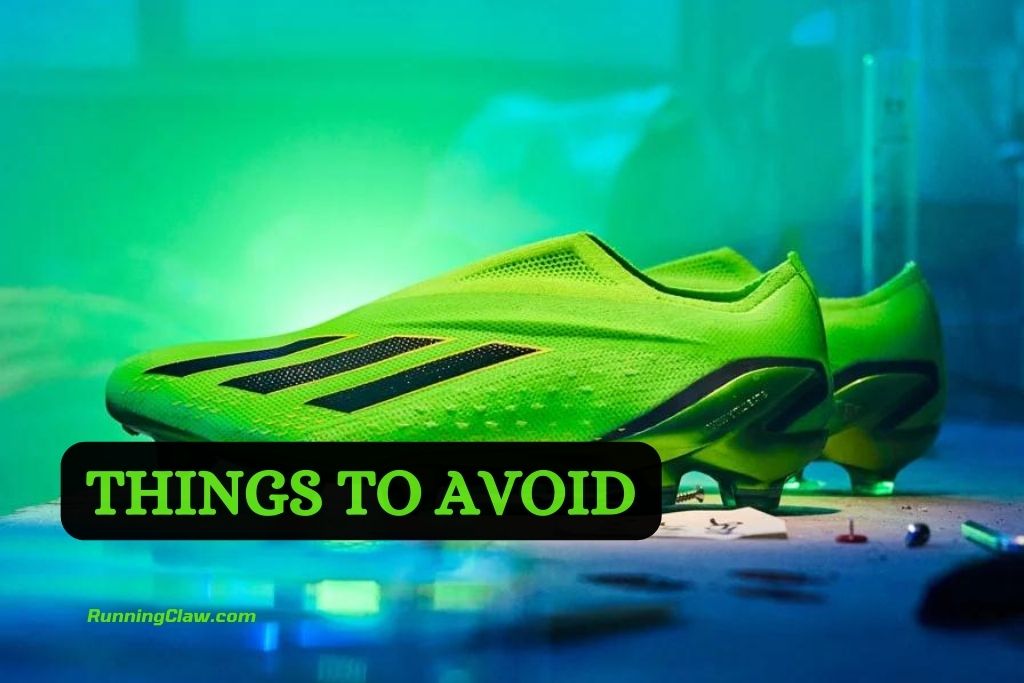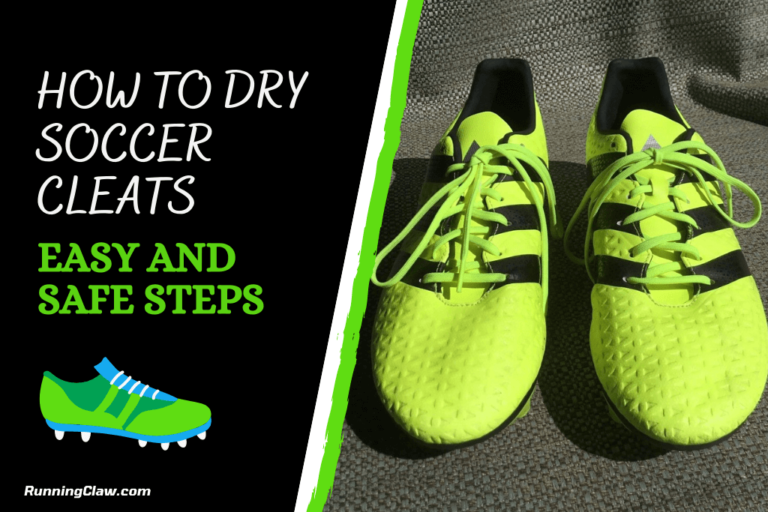Wet shoes aren’t fun to wear, whether running shoes, soccer shoes, or football boots. In fact, not drying your wet cleats hurts the material of your shoes, which could affect how you move on the field, whether you play on artificial turf or natural grass. So, it’s important to dry your shoes every time you wear them.
The outsides get wet from wet grass and mud, and the insides get wet because of sweat.
Are you also facing this problem?
Or
Is wetness damaging your cleats?
Don’t worry. Learn with us about drying your cleats in easy and safe methods.
Types of cleats:
There are two main types of cleats, depending upon the material they are made of.
- Synthetic
- Leather
Cleats are usually made of leather or synthetic material, and the bottom of the shoe has either conical studs or metal cleats.
There are different kinds of leather, like calfskin leather, kangaroo leather, and full-grain leather. Leather cleats are soft, light, and comfortable.
Leather shoes are more expensive and don’t last as long as shoes made of synthetic materials. Leather soaks up more water than synthetic fabrics, which makes it more likely to crack.
Also, shoes made of synthetic materials dry faster than shoes made of leather, which don’t stretch out as much after being worn for a long time.
How to Dry Soccer Cleats?

Before drying the cleats, it’s important to take certain steps. These steps speed up the drying process and keep the cleats in good shape.
For example, during the preparation process, the different parts of the cleats are taken into account to ensure they dry completely.
Preparation:
- Loosen up the laces:
First of all, you have to remove the laces from your shoe. Most shoelaces are made of cotton, which tends to soak up and hold onto the water after being washed. So, taking them off speeds up the drying process of the cleats.
- Remove the insoles:
The soft material that is put in the cleats is the insole. This part of the cleat is very padded because the soccer player’s foot rests on it.
This part is made to absorb a lot so that it is as comfortable as possible. Because of this, it needs to be dried on its own. This is also done to make room inside the cleat so that air can dry it as quickly as possible.
- Clean the upper part:
Usually, moisture is spread over the whole shoe, including the upper part. To dry them fast, you must clean the upper part with any drying or absorbent material to dry them fast.
5 Ways to Dry Cleats in a Better Way
Using a fan:
To dry your soccer cleats, you must put them under or in front of a fan.
This method will work much faster than letting things dry in normal weather. Its only goal is to get rid of moisture so that it won’t damage the main parts of the cleats.
Clean with absorbent material:
Using materials capable of rapidly absorbing moisture, such as towels or napkins, is also beneficial to the drying process. You can put them in the insole region so that the cleat may be stretched out and moisture can be absorbed from all areas of the cleat.
Use paper stuffing:
Paper-based products like newspapers and magazines can greatly assist when drying your cleats. They can be compressed and formed into balls, which can then be inserted into the cleats.
They should also be made loose so that a bigger surface area is covered, and moisture may be collected from the shoes. To ensure that the cleats dry out evenly, the paper should be stuffed into the top of the cleats.
Towels, napkins, and other tiny cloth-based items could be used as an alternative to paper if, for example, paper is unavailable.
During drying, it is important to constantly examine the absorbent material’s condition to determine whether it needs to be replaced after it has absorbed moisture. After around three to four hours, the soccer cleat should be dry and ready to use again, but this will vary depending on how wet the material is.
Using Natural Air:
The best outcomes are typically achieved by working in an adequately ventilated atmosphere and using natural air. This is because natural evaporation only targets the moisture in the air, leaving the cleat components unharmed and in the best condition possible.
Using a cleat dryer:
Another option to consider when looking for a method to dry cleats is using cleat dryers. They are constructed in such a way that they not only aid in the drying process of the cleats but also carry out several other duties that help maintain the cleats’ quality.
Things to avoid while drying your cleats:

If you want to avoid damaging your cleats, take care of these things.
Don’t use a hair dryer.
Excessive heat from a hair dryer will weaken the cleats’ material and gradually damage the cleat.
Do not use an oven:
Putting the cleats in an oven for drying is not a good idea, even at low temperatures.
The radiations of the oven are very harmful to the material used in the manufacturing of cleats, and it may cause the softening of the cleats, and ultimately they will become loose.
Do not put them in direct sunlight:
To avoid damaging your precious cleats, put them under sunlight for only one hour. The more time you put your cleats in direct sunlight that will cost you gradually damage the cleats.
Conclusion:
There are benefits and drawbacks to every strategy. To guarantee that the cleats’ quality and structural integrity are kept after drying, it is advised to be patient when choosing a proper drying method.
You may also like:


